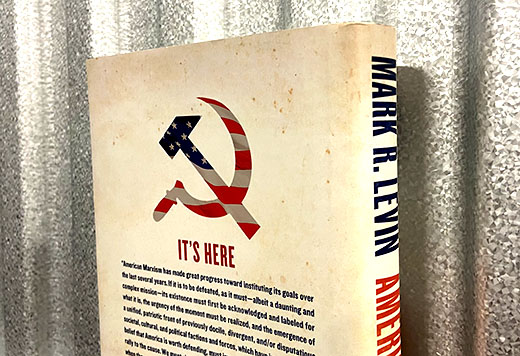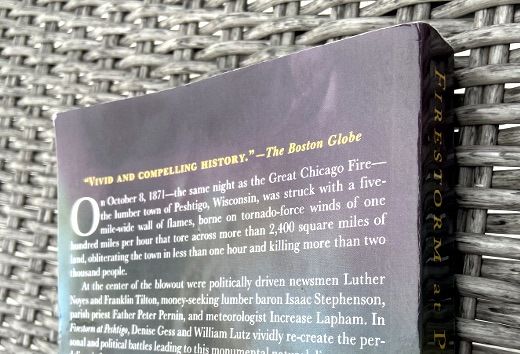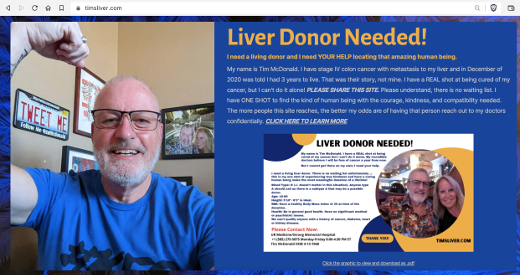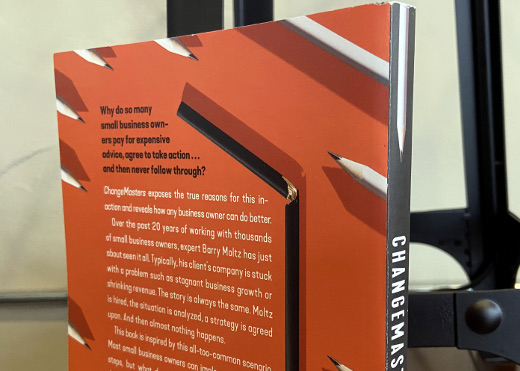My Takeaways From American Marxism

Words matter. And over the last few years I have heard words and phrases used by people describing both themselves and others in ways I haven’t heard in a long time, or ever.
One such word is Marxist, and it is one that has been both applied to oneself or others in a very broadstroke way. This is not a descriptive term I am completely unfamiliar with, yet it is one I am not completely understanding of its meaning either. So when I got a copy of American Marxism by Mark Levin for Christmas this past year, I was intrigued to read it. My hopes were that it would help me understand the 5 H’s and 1 W of the use of the descriptor.
As I read through American Marxism, I kept this personal goal in mind and do so now as I reflect on my takeaways from it.
This book is not a history on Marxism – Marxism comes from Karl Marx, a 19th century German writer and philosopher. From my experience, especially as someone who hasn’t studied him before, his philosophy is to the left of the political spectrum and is often compared with Socialism and Communism. Add the word “American” it and one can assume it applies to similar people and beliefs in the US. But rather than start from the beginning, it starts in the middle and makes assumptions of knowledge of many of the people mentioned in the book. Saying that someone is a Marxist is not a definition of the term, but inferences can be made.
Degrowth – I have never heard of this term previously, and thus was new to me. My own personal high-level definition is that it is the opposite of growth, encompassing everything from economic development to population growth. This is something in itself I may want to explore more, especially as it is presented in the context of Marxism.
I like Capitalism – Where there are both good and bad in everything we do, I personally believe that free societies where people know what’s best for them as well as free markets are the way to go and we have a robust society as a result of it. Granted not everyone shares in this, but there are many complex reasons for this.
The author of American Marxism, Mark Levin, is a conservative radio talk show host, and my guess is this book is written for his audience and not looking to reach a broader audience, similarly to other politically-oriented books I have read. As someone who doesn’t have a firm footing in one place on the political spectrum, reading American Marxism helped me understand better how some observe those who apply this term to themselves, or who don’t but others apply it to them. Where words matter, so do actions, and no matter where someone’s beliefs are, perhaps we shouldn’t focus as much on labels.
If the title of this book intrigues you then I recommend American Marxism. There were many people introduced in this book that I was not familiar with and would require more research as to their background and fully what they said beyond quotes, but it is a well-written and quick read on the topic. As I pass along all books, this one is going to someone whom I am sure the title would resonate with.
This is from The Hot Iron, a journal on business and technology by Mike Maddaloni.
Did you enjoy this? Subscribe to The Hot Iron by RSS/XML feed or Read by Email
Book Take-Aways • (0) Comments • PermalinkAgile And Scrum Resources I Follow Right Now
Recently a colleague asked me what resources I follow in the Agile and Scrum space. As I have been in that universe for several years, some have come into my purview and later left, where others have remained. In the spirit of collaboration with her and the rest of the world, I share this list on my humble blog.
For these resources I have listed them with relevant links and noted some of the value I get from them and in what format. I have purposely listed them in reverse alphabetical order! In addition to these links, I follow many of these firms and individuals on LinkedIn.
Vitality Chicago – This is the firm run by Agile coach and consultant Anthony Mersino. He offers resources and training, and his blog and email list offer a wealth of information. I have taken several courses through my employer with him and his partners, as well as participated in several Agile Coffee sessions facilitated by him.
The Hot Iron – I will blow my own horn here and promote a link to the "Agile / Scrum" category on my own blog. Though I have only written a few posts, it helps me to digest what I learn and as well contribute to the Agile / Scrum universe.
Scrum.org – This is the organization started by Ken Schwaber, one of the co-creators of Scrum. They offer their own training programs and certification tracks, as well as resources including free webinars from a variety of coaches, all you can learn from their mailing list. I also subscribe to their blog which features a variety of writers on all aspects of Scrum.
Scrum Inc. – This is the firm run by Dr. Jeff Sutherland, the other co-creator of Scrum. They offer their own training programs and certification tracks, and resources including free webinars, which you can learn about from their mailing list. I also subscribe to their blog which covers a variety of topics and applications of Scrum beyond software.
Scrum Alliance – This is the original organization built around offering training and certification on Scrum. My Scrum Master and Scrum Product Owner certifications are through them, though they were taught by different independent coaches (both included on this list). They offer resources and webinars you can learn about on their mailing list. As my certifications are through them, I have access to a portal where I can take virtual courses to earn Scrum Education Units – similar to industry continuing education (CE) credits – which are required to renew your certification.
Scaled Agile Framework – Resource site on Scaled Agile, or SAFe. As I am still learning about what Scaled Agile and SAFe is, I can't speak much more to it, and much of what I have read is on their blog which I subscribe to.
Roman Pichler –Personal site for an Agile coach and consultant whose focus is on the Product Owner role and product management. I subscribe to his blog which is very insightful into the PO role, and his podcast is an oral version of what he writes.
Personal Agility – This site promotes the concept of using Agile in your personal life and has resources to guide you. You can subscribe to a daily email as a reminder for your own "personal standup" meeting.
Mountain Goat Software – Training and resources for firm run by Agile coach and consultant Mike Cohn. I took my Certified Scrum Product Owner certification course from. I subscribe to their blog feed and email newsletter. I also am a member of Agile Mentors, a great community forum with active participation and regular members-only events. A year's subscription came with my CSPO certification and charges a fee afterwards, and Mike himself is active in the forum. They have just launched a new podcast, the Agile Mentors Podcast. The photo above is of Planning Poker cards I got as a “thank you” for taking their CSPO course.
Richard Kasperowski – Personal site for an Agile coach and consultant. Much of what he covers are around the human aspects and interactions with people and Agile. I subscribe to his blog and he also has a podcast.
Incrementor –- Training and resources for firm run by Joe Krebs. I subscribe to their blog feed and email newsletter. They offer a variety of Agile posters and stickers, and the first order is free!
The Druckman Company – Training and resources for firm run by Angela Druckman. I subscribe to their blog feed and email newsletter.
Tom Cagley & Associates –This is the firm run by Tom Cagley, an Agile coach and consultant. I met him as he works with Anthony Mersino. His blog offers thoughtful writings and takeaways from re-reading of chapters in Agile and Scrum books.
agilityIRL – An Agile consulting firm where one of their partners, Mike Stuedemann, was the instructor when I took the Certified Scrum Master course that formally started me on my Agile journey. I subscribe to their very insightful blog as well as their email list.
Agile Alliance – Membership organization. I don't belong but I do subscribe to their blog feed and email newsletter. They host a variety of free and paid events.
This is from The Hot Iron, a journal on business and technology by Mike Maddaloni.
Did you enjoy this? Subscribe to The Hot Iron by RSS/XML feed or Read by Email
Agile / Scrum • (0) Comments • PermalinkMy Takeaways from Firestorm at Peshtigo

Even the most casual observer of history will know about the great fire in Chicago, Illinois in the US in 1871. From the legend of Mrs. O’Leary’s cow to the city’s destruction and rebirth, it is the stuff of legends. But do they – or you – know of a fire equally as intense that likely killed ten times as many people… just a few hours away… on the same day?
Don’t feel bad if you don’t – I didn’t either until I moved closer to where that second fire was and read a story about it, Firestorm at Peshtigo: A Town, Its People, and the Deadliest Fire in American History by Denise Gess and William Lutz.
Peshtigo, Wisconsin today is a small city surrounded by a town of the same name and located in northeast Wisconsin, not too far from where what you are reading was written. In comparison to its former self before the fire in 1871, it pales in comparison. Even with its proximity to me, I have never been there and never hear much about it otherwise. But that former self was quite an industrial city in its time, as it was the home to forest logging, wood mills and the manufacturing of wooden products.
Gess and Lutz dig into the history of the area from a variety of sources and have crafted a tale of good times and bad and the people affected by it. As I was intrigued by the story that claimed the lives of at least a thousand people, I of course had several takeaways from it.
There was something always burning – The forests of Wisconsin and the upper US Midwest were home to an abundance of trees. Common practice was to cut down trees and burn the remaining tree stumps so that the land could be used for farming. As a result it seemed like there was always something burning in and around Peshtigo, and that is perhaps why people did not flee the area as quickly before the fires reached their pinnacle.
The beginnings of meteorology – Today it’s too easy to see the weather forecasts down to the hour, but that was far from the case in the late 1800’s. That being said it was the earliest days of weather tracking and meteorology that got its start in the military services. From this tracking it was observed that the temperatures in the area were extremely hot and dry for October and as well there were fires and tornadoes not only in the Peshtigo area but in several cities along Lake Michigan.
Ties between Peshtigo and Chicago – Speaking of Lake Michigan, more than the weather were a bond between these two cities that are located by it. William Ogden was an industrialist from New York and the first mayor of Chicago among other contributions to that city. He also owned a mill and woodenware factory in Peshtigo. He was back in New York on October 8, 1871 and traveled back to the Midwest after he heard the news. His promises to rebuild in Peshtigo never materialized and with the fires went that great industry of the area.
I need to visit Peshtigo now – Reading Firestorm at Peshtigo reminded me of when I read The Great Halifax Explosion and I vowed to one day visit that area. As I am so close to Peshtigo it is on my short list of places to go this summer. The history geek in my will want to take it all in, though I am not sure if the family will share the same enthusiasm in it, but there’s one way to find out.
Firestorm at Peshtigo was a well-told tale of history, and I highly recommend it not only to anyone who lives in the area where Peshtigo is, but anywhere who has an interest in such a sad but unique time. At the end the book the notes section is probably the best I have read in a non-fiction piece, as it is a narrative and not just a clinical list of references. Calling back the family reference, it was my wife’s cousin, a retired librarian, who recommended the story to me. As I pass along all books I read, I am sending it to my own cousin, who is also a retired librarian, as I know she is a voracious reader and I think will equally enjoy this story.
This is from The Hot Iron, a journal on business and technology by Mike Maddaloni.
Did you enjoy this? Subscribe to The Hot Iron by RSS/XML feed or Read by Email
Book Take-Aways • (0) Comments • PermalinkTim McDonald Needs A Live Liver Donor
Tim McDonald needs a live liver donor, could it be you?
For some of you reading this, this may seem like an odd statement; Mike, I only have one liver, how can I donate it? Let me explain.
When most people think of organ transplantation, they think of an entire organ – a heart, a kidney or even an entire liver. However the liver is a unique organ in that you can actually donate a part of your liver to someone else, and it will grow in them and yours will regrow as well. I learned all about the liver from my volunteering for and support of the American Liver Foundation after I lost my Mom to an autoimmune liver disease. Through this association I met people who themselves were recipients of live liver donations. The stories they told were nothing short of amazing in how just a part of someone else’s liver gave them a new lease on life.
So when I learned Tim is looking for a live liver donor himself, and I myself am not a match, I couldn’t help but share this with as many people as possible through my humble blog. Especially as this humble blog is related to how I know him.
Couldn’t Have Happened to a Nicer Guy
Back in the late 2000’s when social media was in its infancy, there was a large culture of people in Chicago who worked in social media or were simply active in it. This is how I know Tim, as he was one of those people I was connected with. Interestingly we only met a few times, but especially in those early days, that wasn’t a detractor to truly connecting with people.
Now years later, neither of us are in Chicago but we are still connected, albeit not as much as before due to my own choices to quit Facebook and quit Twitter (and Instagram too, but I digress – back to Tim). When I saw his post on LinkedIn, at first glance I didn’t think it was about him himself. When I looked further into it, I was sad but hopeful that he can find a donor.
Tim has created a Web site aptly named TimsLiver.com where you can learn more about him, the specifics of who could be a match as well as the overall process. As this is major surgery that will take time to recover, he is looking for a true angel to make this donation.
Please share his Web site to your friends and networks – there’s a PDF on the site that has all of the details as well.
Thank you for reading and sharing this, and I am praying for you Tim!
This is from The Hot Iron, a journal on business and technology by Mike Maddaloni.
Did you enjoy this? Subscribe to The Hot Iron by RSS/XML feed or Read by Email
Announcements • (0) Comments • PermalinkMy Takeaways from ChangeMasters
If you or I were to stop what we are doing right now and make a list of things we would like to change in our lives, it would likely be an easy task. Whether the list is short or long, there is something we likely want to be different than it is now. So why haven’t we changed those things? This is the premise of ChangeMasters – How to Actually Make The Changes You Already Know You Need to Make - the latest book by small business guru Barry Moltz.
In this lively read, Moltz starts by introducing change by getting into why we are resistant to change, offers a tool to help us analyze change, then gives some areas where we could make change in our businesses, and thus in our lives. As I read this cover-to-cover, I could relate to what he wrote about, and had the following takeaways.
It’s Easier to Not Change – From not cleaning our office to not reviewing bank statements, it’s easier to not change to do these things. Much of this is biological – there’s 2 chapters that specifically get into this. Where Moltz says you can skip over these, I highly recommend reading these well-researched passages to get an idea of how our brains are actually wired against change.
Take Baby Steps – You have to start somewhere and to this end there’s a 20-step Change Worksheet that can help you assess issues and make a plan to execute on them. Don’t be intimidated by the number of steps; the questions may be tough but are straightforward if you are serious about making change.
Not Just For Small Businesses – Where the book is written by a small business consultant and geared to small businesses, the first half of the book offers guidance that can be used by anyone personally.
I’m So Vain – In the introduction of the book, Moltz poses the question as to why small businesses hire him to help them make change, yet they don’t do it. I can relate to this remark as I had hired him as a coach back in the day for my own small business. Where I knew I posed a challenge to him as to where to begin to work with me, he successfully helped me develop a new product offering for my business. I only worked with him for a short time – it was me, as I didn’t have sufficient cash flow (or so it seemed) and though he wanted to make things work for me, I cut off the working relationship. I can only speculate how things may have been better with my business if we continued, but I certainly count myself as one of the reasons for why he wrote this book.
ChangeMasters is an enjoyable read and structured in a way where you can identify areas for change with examples and tactics to execute on making change. Where I opined earlier the first half of the book is really geared towards everyone, the second half gets into specific areas that may be a challenge for any business, including customer service, sales and marketing and managing money. I highly recommend this book to any small business owner – even if they believe they are constantly changing as needed, it will then serve as an affirmation to their efforts. But in all reality there is something we can all do better and this book is here to help.
As I give away all books I read, this one was passed along to a small business owner I know. Where we have had many conversations about be in business for yourself and I believe they are on top of things, there’s always room for improvement, and hopefully this book will help. I did however capture the 20-step Change Worksheet for my own personal use in the near future.
This is from The Hot Iron, a journal on business and technology by Mike Maddaloni.
Did you enjoy this? Subscribe to The Hot Iron by RSS/XML feed or Read by Email
Book Take-Aways • (0) Comments • Permalink



